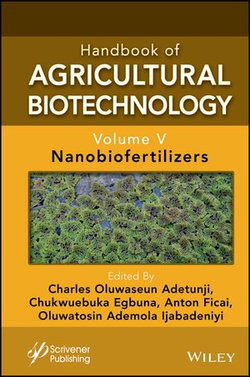
-
Books
-
Education
-
eBooks
-
Audio Books
-
Film & TV
-
Calendars, Diaries & Stationery
-
Giftshop

This book details recent advances in the applications of nanobiofertilizers as a substitute for synthetic fertilizers in boosting food production.
With the steady rise of the world’s population, there is a need to increase the production of safe and nutritious food. The constant loss of arable land,… more
This book details recent advances in the applications of nanobiofertilizers as a substitute for synthetic fertilizers in boosting food production.
With the steady rise of the world’s population, there is a need to increase the production of safe and nutritious food. The constant loss of arable land, as a result of various anthropogenic activities from human action, has become a threat to global biodiversity and ecosystems. Additionally, the issue of climate change has imposed many obstacles to increasing agricultural productivity, especially from biotic and abiotic stressors and temperature-limited environments, such as in high altitudes or seasonally hot regions. Because of these factors, there is a need to adopt sustainable and modern technologies that can boost and improve the rate of food production.
One of the cheapest means of enhancing sustainable food production is to explore natural and unlimited beneficial microorganisms, particularly those that can increase the level of soil fertility, improve crop production and health, improve tolerance to stress, support nutrient uptake and availability, and boost natural biodiversity. The synergetic effect of nanotechnology and beneficial microorganisms for the effective bio-fabrication of nanobiofertilizers, is a sustainable solution for producing pesticide-free food. This book provides a deep insight into microbial diversity, recent techniques used for the isolation, screening, and characterization of beneficial microorganisms with eco-friendly attributes, used for bioengineering of nanobiofertilizers, as well as the application of proteomics, metabolomics, genomics, and bioinformatics. The book also covers commercialization, patents, and the business and socio-economic aspects of nanobiofertilizers, as well as the role of policymakers, stakeholders, and government agencies in the translation of nanobioferilizer research into policy.
Audience
The book is a useful resource for a diverse audience, including industrialists, food industry professionals, agriculturists, agricultural microbiologists, plant pathologists, botanists, microbiologists, biotechnologists, nanotechnologists, microbial biotechnologists, farmers, policymakers, and extension workers.
lessThis item is delivered digitally
Thanks for reviewing Handbook of Agricultural Biotechnology. We will process your review. Accepted reviews will be posted within 3-7 business days.
Be the first to know, stay up to date with what's trending and get staff picks in your inbox with our newsletter


Public: Allow anyone to view or shop your List
Private: No one can view or shop your List
We have kept your A&R details for your new Angus & Robertson account
We also noticed that you have previously shopped at Bookworld. Would you like us to keep your Bookworld order history?
We also noticed that you have an account on Bookworld. Would you like us to keep your Bookworld details, including delivery addresses, order history and citizenship information?
Share This eBook